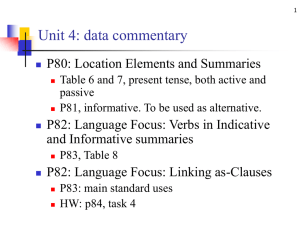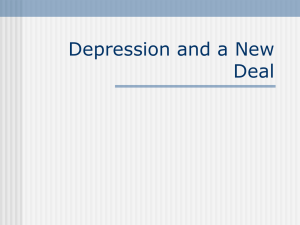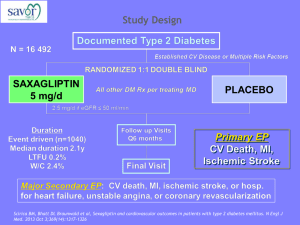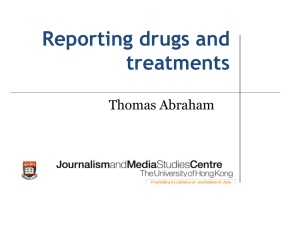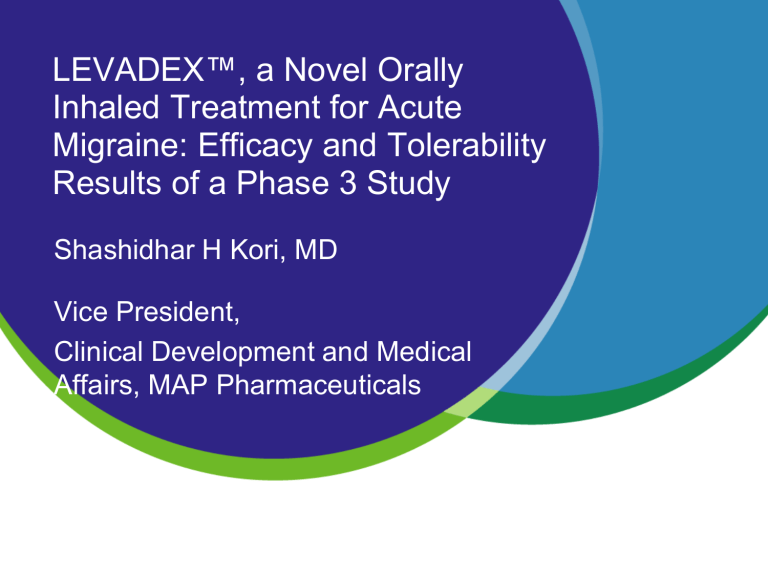
LEVADEX™, a Novel Orally
Inhaled Treatment for Acute
Migraine: Efficacy and Tolerability
Results of a Phase 3 Study
Shashidhar H Kori, MD
Vice President,
Clinical Development and Medical
Affairs, MAP Pharmaceuticals
Authors and Disclosures
• Stephen D Silberstein1 ,MD
•
Advanced NeuroModulation Systems, AGA, Allergan, Boston Scientific, Capnia, Coherex,
Endo, GSK, Lilly, MAP, Medtronic, Merck, NuPathe, Valeant
• Shashidhar H Kori2 ,MD
•
MAP Pharmaceuticals
• Sheena K Aurora3 ,MD
•
Advanced Bionics, Alexza, Allergan, Capnia, GSK, Kowa, MAP, Merck, OrthoMcNeil,
Neuralieve, Nupathe, Takeda
• Stewart J Tepper4 ,MD
•
ATI, GSK, MAP, Merck, St. Jude, Valeant
• Scott W Borland2 ,MS
•
MAP Pharmaceuticals
• Min H Wang2 ,PhD
•
MAP Pharmaceuticals
• Albert E Reppine2 ,RN
•
MAP Pharmaceuticals
• Thomas A Armer2 ,PhD
•
MAP Pharmaceuticals
• David W Dodick5 ,MD
•
Allergan, ANS, Coherex, Endo, HS Lundbeck, Kowa, MAP, Medtronic, Merck, Minster,
Neuralieve, Neuraxon, NuPathe, Pfizer, Wiley-Blackwell
1. Jefferson Medical College of Thomas Jefferson University, Neurology, Philadelphia, PA
2. MAP Pharmaceuticals, Mountain View, CA
3. Swedish Headache Center, Neurology, Seattle, WA
4. Cleveland Clinic, Center for Headache and Pain, Neurological Institute, Cleveland, OH
5. Mayo Clinic, Neurology, Scottsdale, AZ
2
Disclaimer
LEVADEX™ (MAP0004) is an investigational product
candidate and is not yet approved by the US Food and
Drug Administration
3
3
Limitations of Existing Acute Migraine Therapies
Slow onset of action
Inconsistent response attack to attack
• Inconsistent absorption through nasal mucosa
• Inconsistent absorption of tablets due to gastric stasis
30% to 40% of patients nonresponsive to treatment
High recurrence rate
Limited efficacy when taken late in migraine
May lead to medication overuse headache
Poor tolerance (eg, triptan sensations, nausea)
4
4
Dihydroergotamine: Well Established Efficacy and Its
Role in Treatment of Migraine
Advantages
Proven efficacy in the treatment of migraine for
more than 60 years
Gold standard in refractory migraine
Commonly used drug for medication overuse headache (MOH)
5
5
Dihydroergotamine: Limitations Due to
Formulation
Disadvantages
Poor oral bioavailability
Inconvenient to administer IV
Nausea associated with injection therapy
Inconsistent absorption when administered through routes other than IV
6
6
Proprietary TEMPO® Inhaler Optimizes
Pulmonary Delivery
Breath actuated
Plume velocity reduced
Consistent delivery of drug
Minimal oropharyngeal deposition
Expected to deliver most drug deep into
the lung
7
7
TEMPO® Inhaler Enables Efficient and Consistent
Delivery to the Lung
Radiolabeled fluticasone propionate
canister in standard inhaler
Radiolabeled fluticasone propionate
canister in TEMPO® Inhaler
TEMPO inhaler provides improved delivery vs commercial metered dose inhaler
•
•
•
3-fold more drug in the lungs
4-fold less drug in the mouth and throat
2-fold reduction in dose-to-dose variability
Shrewsbury SB, et al. Int J Pharm. 2008;356:137-143.
8
8
Phase 1 PK: LEVADEX is Associated with Significantly Lower
Cmax than DHE Delivered Via Intravenous Infusion
Significant IV plasma “spike”
↑ Potential for side effects
LEVADEX
LEVADEX
LEVADEX
LEVADEX
Suppressed inhaled plasma Cmax
↓ Potential for side effects
Shrewsbury SB, et al. Headache. 2008; 48:355-367.
9
MAP0004 Tmax Compared with Non-IV Routes of Administration
DHE Tmax Based on Delivery
1
1
2
2
1
3
4
4
MAP0004
4
1Van
der Kuy. P-HM, et al . Eur J Clin Pharmacol. 1999;55:677-68.
H, et al. Clin Pharmacol Ther. 1996;60:265-275.
3de Hoon JN, et al. Br J Clin Pharmacol. 2001;52:45-51.
*Nominal dose.
4Shrewsbury SB, et al. Headache. 2008;48:355-367.
IM = intramuscular; SQ = subcutaneous; IV = intravenous.
10
10
10
2Humbert
FREEDOM-301 Objectives, Design, Endpoints
Objectives: To evaluate the efficacy and safety of
LEVADEX (previously MAP0004), a novel orally
inhaled form of dihydroergotamine (DHE), in the
treatment of acute migraine compared to placebo
FREEDOM-301 Study Design
Endpoints
Co-Primary:
• Pain relief at 2 hrs
• Phonophobia free at 2 hrs
• Photophobia free at 2 hrs
• Nausea free at 2 hrs
Treatment Period 1
Double-Blind
(Up to 8 weeks)
Run In
(At least 28
days)
Active
Treatment Periods
2 and 3
Open Label Safety
Placebo
Visit 1
Visit 2
Visit 3
Secondary
• Sustained pain relief 2-24 hrs
• Time to pain relief
• Pain relief at 4 hours
• Pain relief at 10 minutes
11
Phase 3: Baseline Demographics
Parameter
Age, years
Mean (SD)
Median (range)
Sex, n (%)
Female
Male
HIT-6 Score
Mean (SD)
Median (range)
Disability due to headache, n (%)
≥ 60 HIT-6 score
< 60 HIT-6 score
Missing
LEVADEX
1.0 mg
(n = 395)
Placebo
(n = 397)
40.5 (11)
42 (18 – 65)
39.6 (12)
40 (18 – 65)
363 (92)
32 (8)
362 (91)
35 (9)
65.5 (4.9)
66 (50 – 78)
65.6 (5.0)
65 (48 – 78)
352 (89)
41 (10)
2 (1)
357 (90)
36 (9)
4 (1)
12
12
Phase 3: At the Time of Treatment, Intensity of Migraine
Symptoms Were Similar in Both Treatment Groups
= Mild
= Moderate
= Severe
= Allodynia
*
Nausea
Phonophobia
Photophobia
Allodynia
*At time of treatment, nausea scores were missing for 2 patients who received LEVADEX.
13
13
Phase 3: All Co-Primary Endpoints Met
Parameter
LEVADEX
1.0 mg
(n = 395)
Placebo
(n = 397)
P value*
Pain relief at 2 hours, n (%)
232 (59%)
137 (35%)
< .0001
Phonophobia free at 2 hours, n (%)
209 (53%)
134 (34%)
< .0001
Photophobia free at 2 hours, n (%)
184 (47%)
108 (27%)
< .0001
Nausea free at 2 hours, n (%)
265 (67%)
233 (59%)
.02
*P
value vs placebo calculated using the Cochran-Mantel-Haenszel test controlling for baseline pain
score, adjusted for multiplicity
14
14
Phase 3: Secondary Endpoints Demonstrated Rapid Pain
Relief that is Sustained at 24 Hours with LEVADEX
Parameter
LEVADEX
1.0 mg
Placebo
P value*
Sustained Pain Relief
from 2-24 Hrs, n (%)
167 (44%)
n = 382
76 (20%)
n = 387
< .0001
30
n = 384
—
n = 381
.0266†
254 (65%)
n = 393
144 (37%)
n = 391
< .0001
33 (9%)
n = 388
22 (6%)
n = 387
.1584
Time to pain relief, minutes
Pain Relief at 4 Hours, n (%)
Pain Relief at 10 Minutes, n (%)
*P
value vs placebo calculated using the Cochran-Mantel-Haenszel test controlling for baseline pain
score, adjusted for multiplicity.
†P value vs placebo calculated using the 2-sided log-rank test.
15
15
Pain Relief
Pain Relief
Sustained Pain Relief
Proportion of Subjects with Pain Relief
p<0.0001
70%
p<0.0001
59%
60%
50%
65%
Time to pain relief
was 30 minutes
(p=0.0266)
40%
*
44%
+
29%
30%
p<0.0001
48%
35%
*
37%
36%
28%
22%
20%
20%
17%
p=0.1584
10%
Placebo
LEVADEX
9%
6%
0%
10min
30min
60min
2hrs
4hrs
Primary and secondary endpoints marked in red
+ p=0.0245, * p<0.0001
Note: p-values from exploratory endpoints not adjusted for multiplicity
2-24hrs
2-48hrs
16
Pain Free
Pain Free
Sustained Pain Free
45%
Proportion of Subjects Pain Free
*
39%
40%
35%
*
28%
30%
*
25%
23%
*
20%
*
18%
17%
15%
Placebo
LEVADEX
15%
10%
+
10%
5%
5%
0.5%1%
7%
5%
6%
1%
0%
10min
30min
60min
2hrs
4hrs
All exploratory endpoints
+ p=0.0024, * p<0.0001
Note: p-values from exploratory endpoints not adjusted for multiplicity
2-24hrs
2-48hrs
17
Proportion of Patients at 2 Hours
Phonophobia, Photophobia, Nausea Free
80%
p=0.0210
70%
67%
p<0.0001
60%
p<0.0001
53%
47%
50%
40%
59%
Placebo
LEVADEX
34%
27%
30%
20%
10%
0%
Phonophobia Free
Photophobia Free
Nausea Free
Primary and secondary endpoints marked in red
18
Phase 3: LEVADEX is Generally Well Tolerated
in Adults with Migraine
Adverse Events in ≥ 2% of Patients and Greater Than Placebo
Patients, n (%)
LEVADEX
(N = 404)
Placebo
(N = 401)
Pharma product complaint (taste)
26 (6.4)
7 (1.7)
Nausea
18 (4.5)
8 (2.0)
Cough
10 (2.5)
5 (1.2)
Parameter
● In patients treated with LEVADEX, symptoms and
sensitivities typically associated with triptans, such as
chest discomfort (1%) and chest pain (0%) were rare
and occurred at similar rates compared with placebo
● No serious adverse events deemed related to study
drug were reported
19
19
Adverse Event Profile
Double-Blind Period
Run-In
Period
(N=805)
Placebo
(N=401)
LEVADEX
(N=404)
140 (17.4%)
101 (25.2%)
126 (31.2%)
Upper Respiratory Tract Infection
22 (2.7%)
12 (3.0%)
12 (3.0%)
Nasopharyngitis
14 (1.7%)
14 (3.5%)
8 (2.0%)
Sinusitis
16 (2.0%)
5 (1.2%)
3 (0.7%)
Nausea
1 (0.1%)
8 (2.0%)
18 (4.5%)
Vomiting
1 (0.1%)
3 (0.7%)
8 (2.0%)
4 (0.5%)
5 (1.2%)
10 (2.5%)
0 (0.0%)
7 (1.7%)
26 (6.4%)
Adverse Events 2% in Any Group
Number (%) of Patients Reporting at Least 1 AE
Infections and Infestations
Gastrointestinal Disorders
Respiratory, Thoracic and Mediastinal Disorders
Cough
Social Circumstances
Pharma Product Complaint (Indication of Taste)
• Symptoms and sensitivities typically associated with triptans, such as chest discomfort (1%), chest
pain (0%) and paresthesia (0.5%), were rare and comparable to placebo
• No decrease in pulmonary function (spirometry) compared to placebo group
20
Additional Analyses (Post Hoc): 2 hr pain relief
Allodynia
70%
60%
50%
% of
40%
Patients 30%
20%
10%
0%
Time to Treatment
* p< 0.0001
70%
*
*
*
60%
+
+
50%
% of
Patients
40%
30%
20%
10%
0%
With Allodynia
< 1hr
Without Allodynia
Placebo
LEVADEX
1-4 hrs
Placebo
Morning Migraine
4-8 hrs
>8 hrs
LEVADEX
Level of Migraine Disability
+ p<0.05, * p< 0.0001
70%
60%
50%
% of
40%
Patients 30%
20%
10%
0%
* p< 0.0001, + p<0.05
*
70%
*
+
+ p<0.01, * p< 0.0001
*
60%
50%
+
% of
Patients
40%
30%
20%
10 %
0%
Morning Migraine
Rest of Day
HIT-6 <60
Placebo
LEVADEX
Placebo
HIT-6 >= 60
LEVADEX
21
Additional Analyses (Post Hoc)
Pain Severity
Pain Relief
80
70
70%
60
60%
50
50%
% of
40
Patients
% of
Patients
30
2 hr PainNausea
Relief * p< 0.0001
*
*
40%
30%
20%
20
10%
10
0%
0
10
Minutes
30
Minutes
60
Minutes
LEVADEX Moderate
LEVADEX Severe
Placebo Moderate
Placebo Severe
Placebo
Without Nausea
LEVADEX
Aura
2 hr Pain Relief
2 hr Pain Relief
+ p<0.05, * p< 0.0001
70%
*
60%
50%
With Nausea
Vomiting
70%
% of
Patients
4 hrs
2 hrs
60%
+ p=0.0002, * p< 0.0001
+
*
50%
+
% of
Patients
40%
30%
40%
30%
20%
20%
10 %
10 %
0%
0%
With Vom iting
Without Vom iting
Placebo
LEVADEX
With Aura
Placebo
Without Aura
LEVADEX
22
Conclusions
• In this trial, LEVADEX demonstrated rapid and sustained
efficacy in treating acute migraine
• LEVADEX was well tolerated with minimal side effects,
and low incidence of triptan-like sensations
• LEVADEX was effective in a broad spectrum of migraine,
including those thought to be generally treatment
resistant
23




